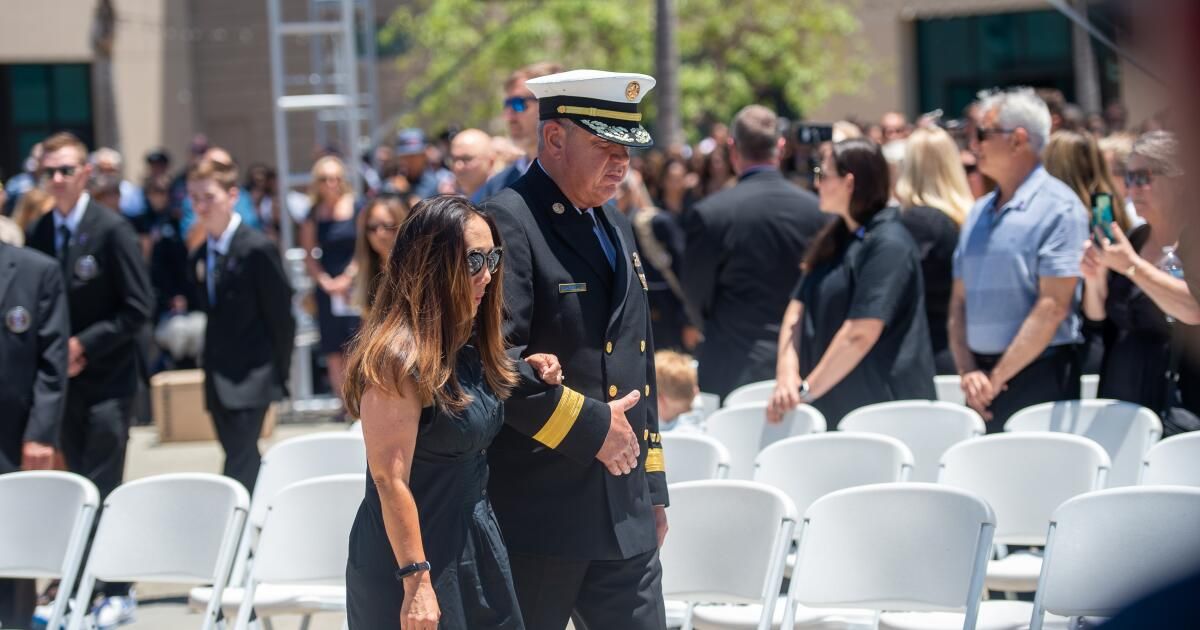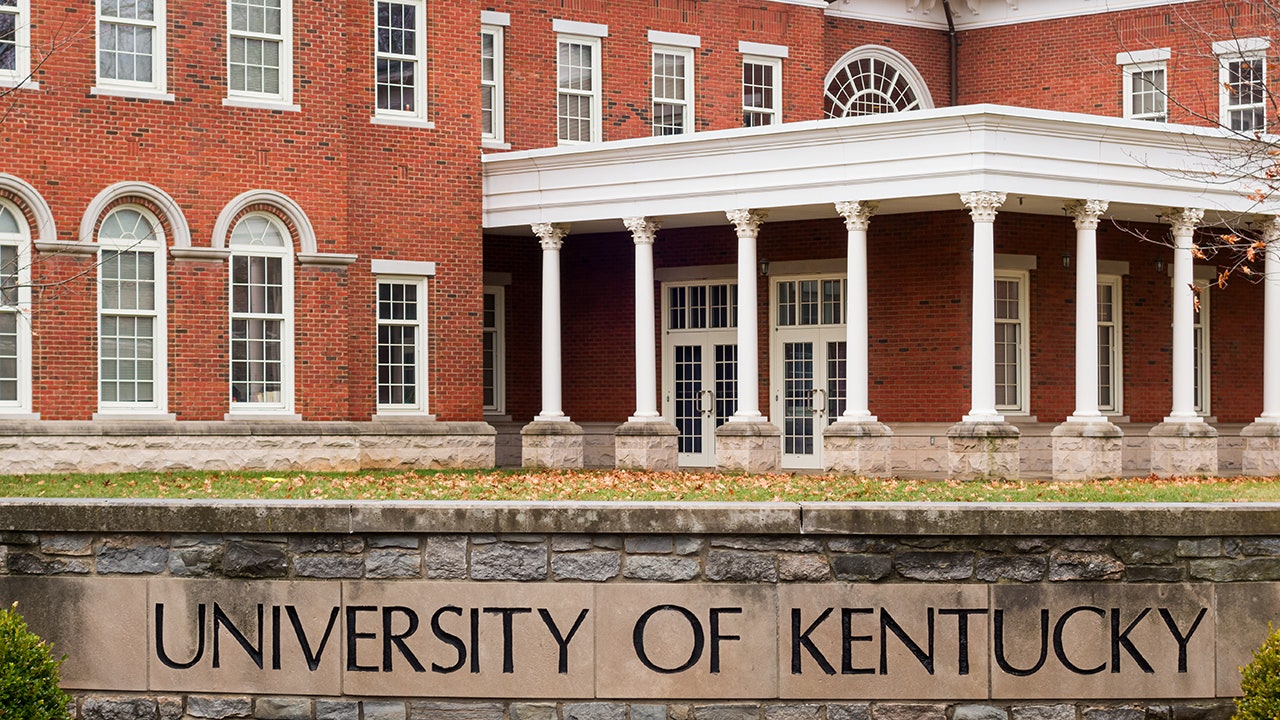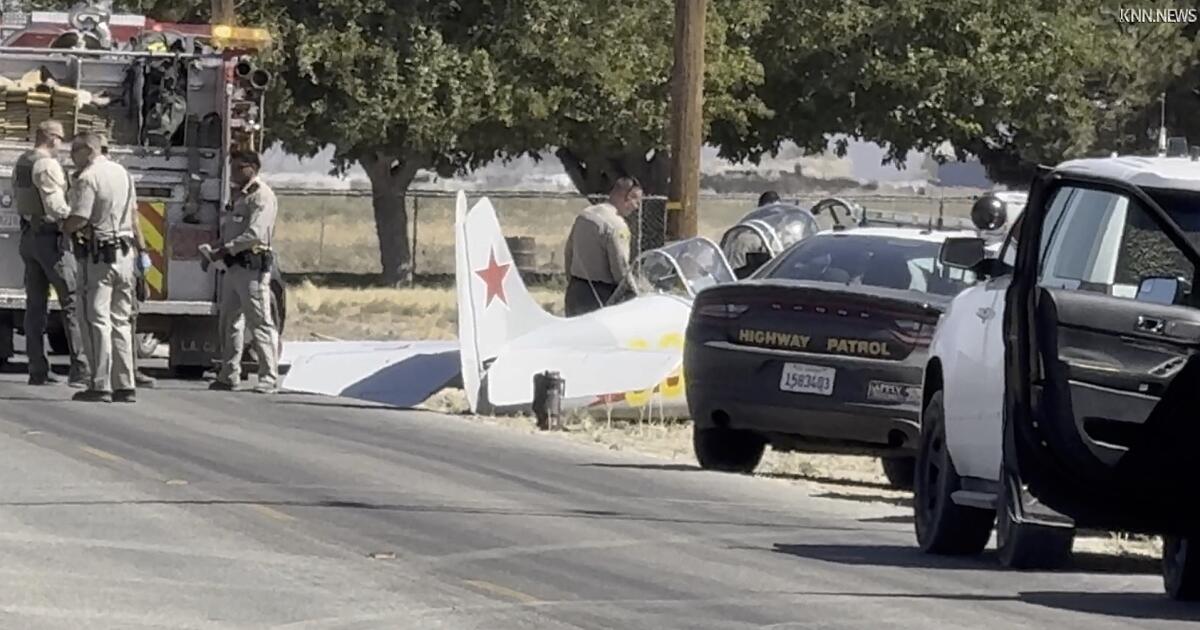No one knew that the burning construction vehicle could turn into a bomb.
Not the driver who tried to put it out with a fire extinguisher, nor the workers who poured water on the engine, nor Andrew Pontious, a Los Angeles County firefighter dispatched to the Palmdale quarry on June 14.
Pontious had been spraying water near the vehicle for about two minutes when one of its nearly 7-foot tires blew out, according to a Fire Department analysis completed this month.
Pieces of rubber and steel flew across a football field. Pontious, 53, died instantly.
Los Angeles County Firefighter Andrew Pontious died while on duty on June 14.
(Los Angeles County Fire Department)
“It was like an IED,” said David Pontious, Andrew's brother who worked at the same Palmdale fire station before retiring this spring, referring to an improvised explosive device, as a roadside bomb is known in a war zone.
It is common for tires to explode in a fire and for the pressure to build up until the air is forced out with a loud bang.
But sometimes the tire doesn't just burst, it explodes. The air inside the tire combines with heat, starting a chemical reaction powerful enough to create a violent shock wave. The bigger the tire, the bigger the explosion.
“It's shrapnel. It's like a bomb. It's the same principle,” said Olivier Bellavigna-Ladoux, a mechanical engineer specializing in vehicle safety.
In the niche of vehicle safety engineers, it was a known risk, rare but deadly. For firefighters across California, the threat was virtually unknown until it became apparent with Pontious' death.
This month, Los Angeles County fire officials issued a safety notice ordering firefighters to stay away from burning heavy vehicles. Fire departments in the city of Los Angeles, Orange County and San Bernardino County, as well as the California Department of Forestry and Fire Protection, sent the notice to their members, which together include thousands of California firefighters.
“We didn’t know those big tires could explode in such a way that they could kill someone,” said David Pontious, 55. “It was a freak accident.”

The nearly 7-foot tire on the quarry construction vehicle, pictured above, exploded after the engine caught fire on June 14.
(Los Angeles County Fire Department)
Rescuing people from burning buildings was perhaps Andrew Pontious's least notable accomplishment.
He was, above all, a man of outdoor life.
As a teenager, he would disappear for entire weekends, telling his family he planned to “run away to the mountains.” He loved to hunt and cook, and sometimes combined the two passions at the fire station by serving quail enchiladas, chicken fresh from a recent hunt. In his spare time, he was caretaker of a bighorn sheep shelter and would go into the woods in the middle of the night to check on the water supply.
Pontious had resisted becoming a firefighter like his older brother, but in his early 30s, his job helping a logging company keep spotted owls out of trees began to seem like a dead end.
He fought fires in Rosemead and El Monte for about a decade before his brother convinced him to come to Palmdale. Fire Station 93 was inconveniently located, about 70 miles from the Upland home he shared with his wife, Kim, and stepdaughter, along with their hunting dog, four cats and a desert tortoise. But the station was known for the intensity of its calls: grassland fires, stabbings, a cat trapped in a tree that turned out to be a mountain lion.
For nine years, the brothers worked together, David as captain and Andrew as a perennial firefighter, never interested in moving up the ranks.
Andrew just wanted to put out fires until his planned retirement next year, and he was usually the first one there.
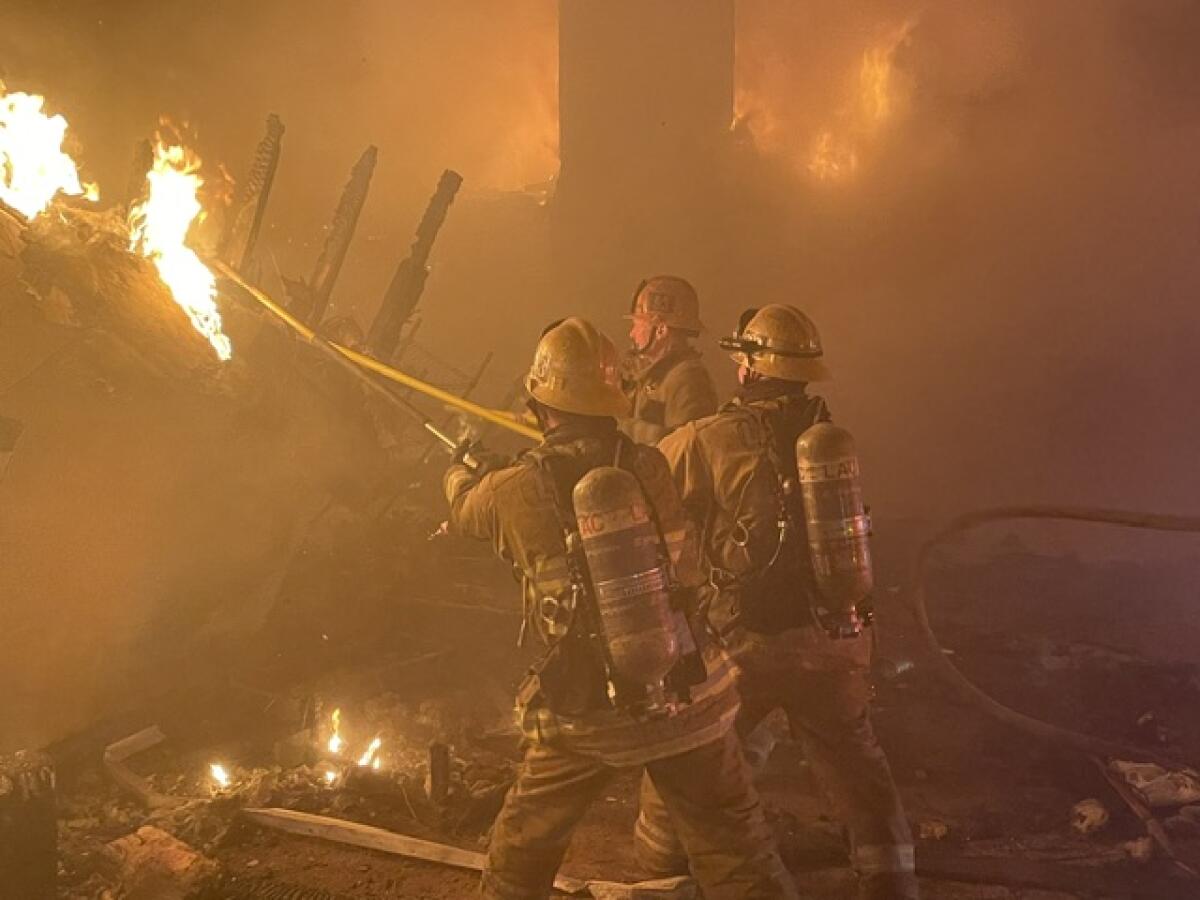
Andrew Pontious, pictured above middle fighting a structure fire, chose Station 93 in Palmdale because it was one of the busiest in the county, his brother said.
(David Pontius)
Pontious and his crew arrived at the quarry at 2:06 p.m.
Four minutes earlier, one of the construction vehicle's rear tires had exploded, shattering the windshield of a nearby truck and forcing quarry workers to run back.
Amid the chaos, no one informed the firefighters on the scene about the first tire explosion, said Dave Gillotte, head of the Los Angeles County Firefighters Union. And no one told them that the vehicle had been burning since at least 1:38 p.m.
“If the knowledge of the tire explosion and the length of time it had been burning was accurate and direct, I know our firefighters would have absolutely altered [the response]“,” said Gillotte, who interviewed firefighters at the quarry that day.
The longer a tire is exposed to heat, the greater the chance it will explode, said Bellavigna-Ladoux, the mechanical engineer.
This was a science that the fire department only learned after the accident.
“I was never taught that there is a shock wave when a tire explodes,” said Los Angeles County Fire Chief Anthony Marrone. “If I had been the firefighter on Truck 93 that afternoon, I truly believe I would have done the same thing as Firefighter Pontious, and I would have been killed.”
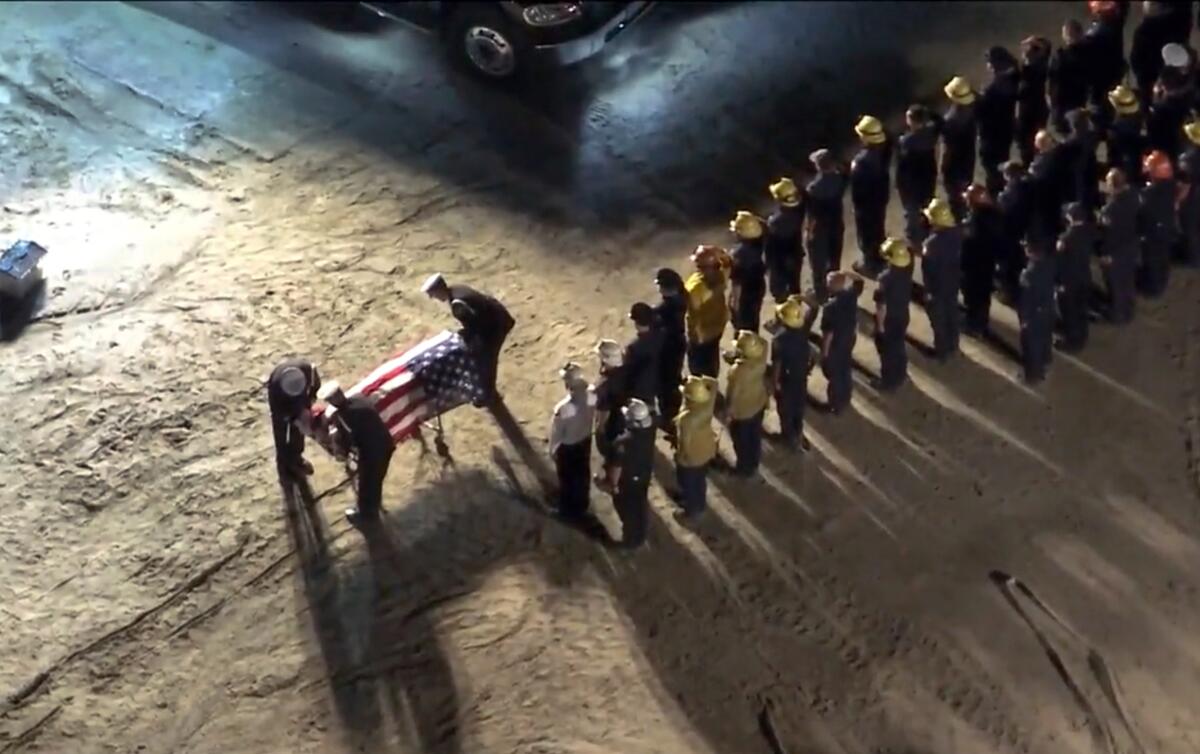
The fire department ordered firefighters to stay away from burning heavy vehicles following Pontious' death.
(KTLA)
The fire department's analysis of the incident said officials could find “very little information” about the effect of the fire on large tires.
The safety advisory the department issued after Pontious' death tells firefighters to never get within 15 feet of a burning heavy equipment vehicle, and to come within 50 feet only to rescue someone. The department gave similar guidance for tractor-trailer fires.
Patricia Dolez, a scientist whose study of tire explosions is cited in the Los Angeles County safety advisory, said few workers who operate large vehicles — specifically miners and truck drivers — are aware of the risk. The Palmdale driver’s first reaction was to try to put out the fire, she said, even as sparks spread.
Dolez said his study was commissioned nearly two decades ago by a Quebec research institute after several truck drivers were killed by exploding tires. Following Pontious' death, the U.S. Mine Safety and Health Administration recommended that if a vehicle begins to smoke, miners should retreat and wait for emergency services to arrive.
It's less clear what those first responders are supposed to do, said Stephen Gilman, vice president of the International Association of Fire Fighters.
Gilman said the association, which represents 345,000 firefighters and first responders nationwide, is hoping for some national guidance for people who will be rushing toward a blaze.
The miners “aren’t going to put out their own fires,” Gilman said. “That leaves them with no other option than to call 911.”

